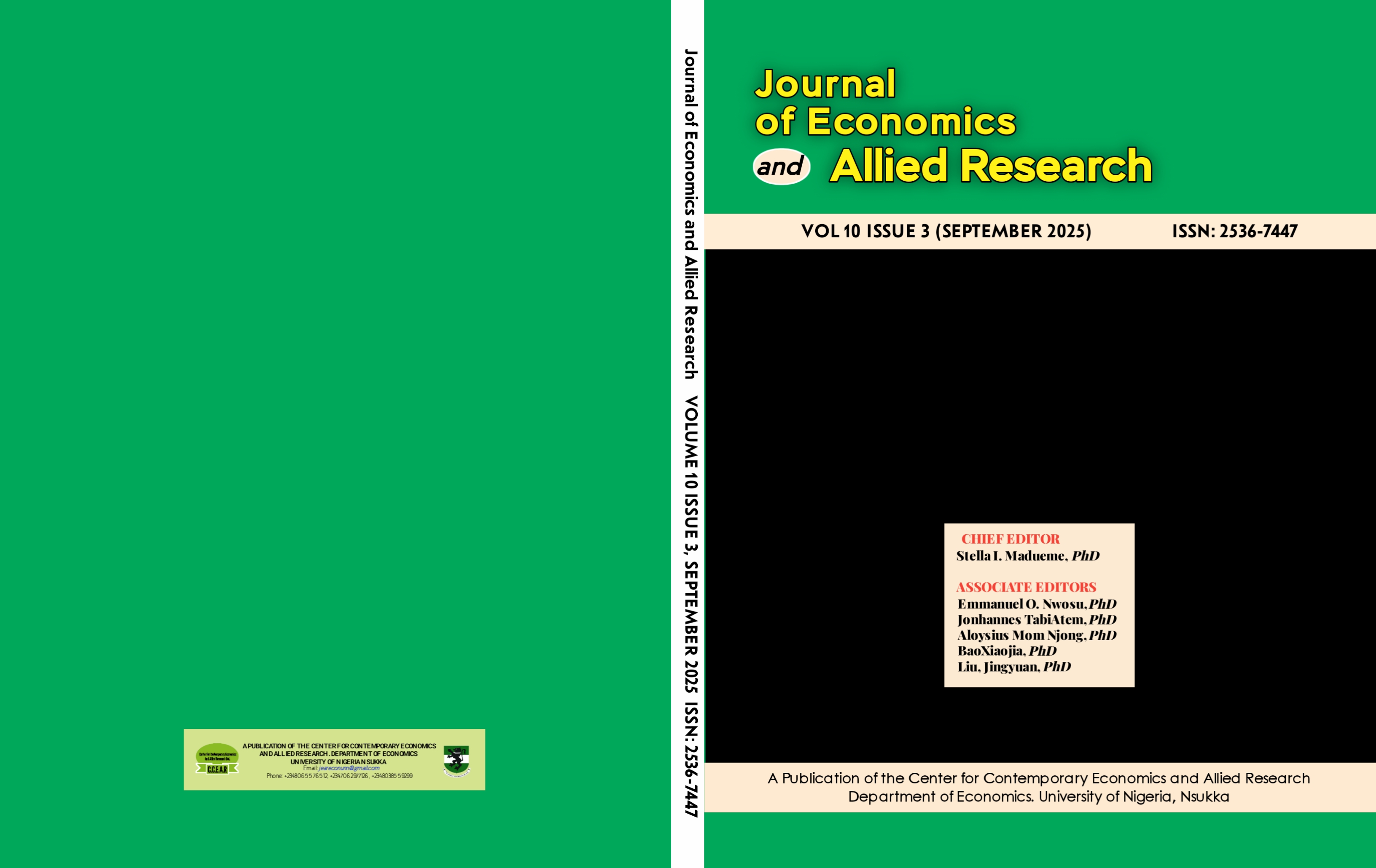EXCHANGE RATE AND INDUSTRIAL SECTOR PERFORMANCE IN NIGERIA
Keywords:
Industrial sector performance, Exchange rate, Stabilization initiative, Fluctuations, Macroeconomic stabilityAbstract
This study examined the effect of exchange rate on industrial output in Nigeria. It employed the autoregressive distributed lag model (ARDL) test of co-integration as the estimation technique. The study found that exchange rate has a negative and statistically significant impact on industrial output at 5 percent significance level in the long run. However, in the short run, the impact of exchange rate on industrial production in Nigeria was found to be positive but not statistically significant at five percent significance level. Exchange rate was found to have a positive and statistically significant impact on quarry and mining output at 5 percent level of significance in both the long-run and short-run periods. To mitigate the adverse effects of exchange rate fluctuations, policymakers and businesses should consider implementing strategies such as hedging or diversifying their currency exposures. Additionally, fostering solid international trade relationships and promoting domestic industrial competitiveness should sufficiently be leveraged on to mitigate against the negative impact of exchange rate volatility. Most importantly the current exchange rate stabilization initiative of the current administration that has seen margin of gain between black market and official forex window shrink should be doubled so as restore needed investment confidence and boost trade.



